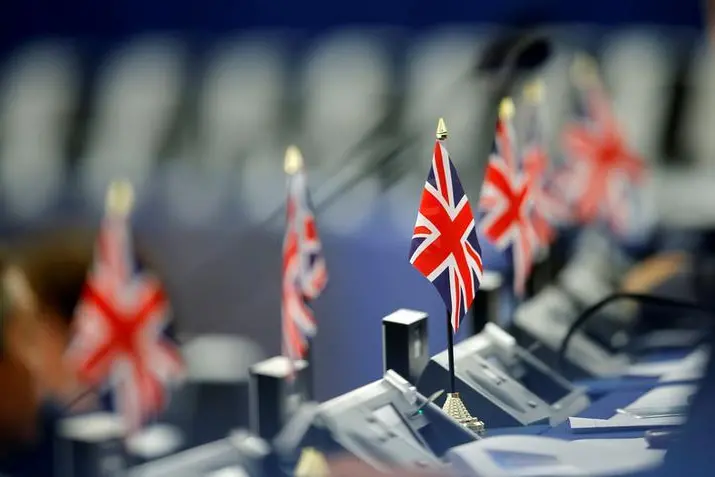PHOTO
The six days from last Thursday to Tuesday saw the deepest renewal of transatlantic ties in six years, not just between the US and Europe, but also Canada too, after a very difficult period since 2016.
At five separate summits in Cornwall and Brussels — the G7, NATO, UK-US, US-EU and Canada-EU — Western leaders sought to take the first steps toward reunifying the transatlantic alliance. While many have perceived this as a decisive break with the Donald Trump era, the powers have also sought, with less success, to draw a line under the Brexit squabbles also seen since 2016.
The last week of rapprochement saw the US stealing the headlines by unleashing several high-profile initiatives. This included President Joe Biden and UK Prime Minister Boris Johnson signing a new Atlantic Charter, following the original treaty of 1941 agreed by Winston Churchill and Franklin Roosevelt. In a symbolic move, the two sides committed to cooperation on issues including climate change, security and the post-pandemic recovery. Then, on Tuesday, the US and EU ended their long-running rift over subsidies to Boeing and Airbus and suspended billions in punitive tariffs.
While the US won the PR offensive during Biden’s first overseas trip, it is Canada that has, over the last six years, played a major and underappreciated role in keeping the transatlantic alliance robust. Although there are some irritants between Ottawa and London, including Brexit and the Northern Ireland Protocol, and also between Ottawa and Brussels, such as the EU ban on the import of Canadian seal products, relations are fundamentally positive and cooperative. These ties are built on a series of economic agreements signed since the 1970s and all sides’ joint membership of bodies such as the G7 and G20.
In 1976, the-then European Economic Community (EEC) and Canada signed a Framework Agreement on Economic Co-operation, the first formal agreement of its kind between the EEC and an industrialized third country. And in 1976 the Delegation of the European Commission to Canada opened in Ottawa. In 1990, extending the scope of their dialogue, European and Canadian leaders adopted the Declaration on Transatlantic Relations. More recently, in 1996, a new political declaration on EU-Canada relations was signed at a summit in Ottawa, adopting a joint action plan identifying additional specific areas for cooperation.
Building from these agreements, Canada and the UK agreed last December a post-Brexit trade continuity agreement. This followed an agreement in principle to roll over existing trading arrangements and begin negotiations on a new, bespoke UK-Canada trade deal.
However, it is the EU-Canada Comprehensive Economic and Trade Agreement (CETA), which took the best part of a decade to negotiate and provisionally came into effect in 2017, that has grabbed more political attention. This saw some 98 percent of all tariffs on goods traded between the two powers become duty free. At the time, it was billed as “the most ambitious trade agreement the EU has ever concluded.”
CETA, which covers about a fifth of the global economy, has driven an increase in two-way commerce, including a 15 percent boost in EU exports to Canada in 2020 alone. The deal assumed a particularly high profile during the UK-EU Brexit negotiations, which was sometimes uncomfortable for Canadian ministers, who did not want to become embroiled in the disputes between London and Brussels. Many Brexiteers saw the agreement as the template for what became last December’s EU-UK cooperation deal.
The EU has negotiated a wide range of external trade agreements for member states, but for many UK “Leave” voters it was this Canadian model that stood out. Part of the reason for this is that it allows the UK to completely exit the Brussels-based club, including the customs union and single market, and leaves it free to do bilateral trade deals with other countries, plus multilateral ones such as the Comprehensive and Progressive Trans-Pacific Partnership with countries in Asia-Pacific and the Americas.
However glorified CETA is by some Brexiteers, the model has also brought costs for the UK, given the different starting positions of London (previously a member of the bloc for more than four decades and embedded into many of its structures) and Ottawa vis-a-vis the EU. Whereas CETA represents a net level of integration between the EU and Canadian economies, the new UK-EU cooperation deal has been a sharp break (or “hard Brexit”) between the UK and EU.
Given how polarizing the Brexit debates have been since 2016, the US, UK, EU and Canada now all hope that the divisions of the past on this issue can be ameliorated and attention can instead be paid to a renewed partnership between them. While that is possible, Brexit is unlikely to entirely disappear as a key political issue, as the last week of disagreements with London over the Northern Ireland Protocol have highlighted.
- Andrew Hammond is an Associate at LSE IDEAS at the London School of Economics.
Copyright: Arab News © 2021 All rights reserved. Provided by SyndiGate Media Inc. (Syndigate.info).












